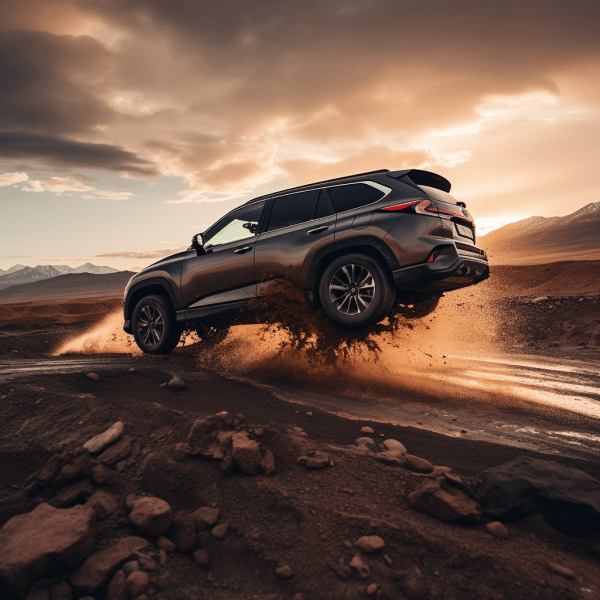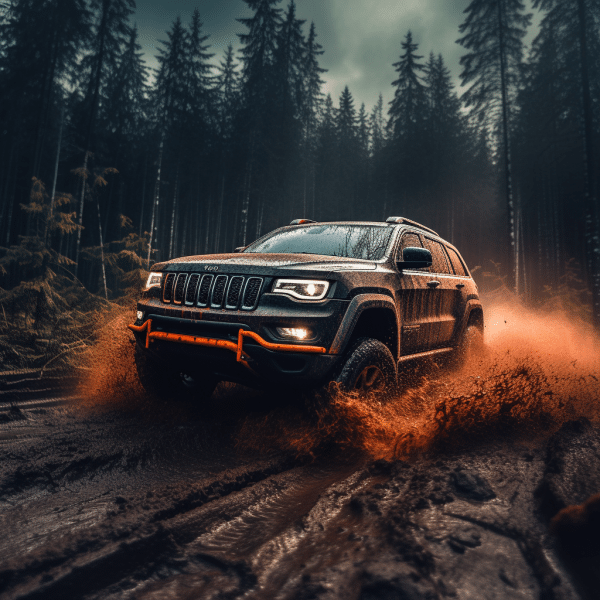
Is Driving an SUV Harder than a Car? the Challenges and Solutions

If you have plans to buy a new or used vehicle soon, you know how appealing the mention of an SUV is always thought. There are many positive reasons to go for an SUV rather than a car, truck, or minivan. Of course, the dynamics of an Driving an SUV challenges are unmatched, even with the size and extensive profile providing plenty of cargo space even for a large family. You can also count on SUV road capabilities plus driving features to come in handy for all road conditions and offer that sense of safety.
However, despite this compelling argument for getting an SUV, some reasons would make you want to stay away from such a vehicle. One common objection to owning an SUV relates to its difficulty in driving, with the most common question being, “Is driving an SUV harder than a car?”
Are SUVs Harder to Drive?
Yes, SUVs are indeed more demanding to drive than a typical family sedan. While this is true, the few simple practices we have listed could help make the driving process easier.
Still, driving an SUV is difficult than when going with smaller vehicle counterparts. The following reasons could help answer,” Is driving an SUV harder than a car?’
Center Of Gravity
Like other heavy vehicles, an SUV comes with a higher center of gravity that makes them harder to drive. The higher center of gravity also makes an SUV more top-heavy, reducing maneuverability around corners. Not only does this affect driving around sharp corners, but it also increases the possibility of a rollover whenever you make sudden sharp turns. You can, however, overcome this by evenly loading the SUV on both sides and front to back to distribute the higher center of gravity.
Plenty Of Blind Spots
SUVs offer an excellent viewpoint, with the driver’s seat exclusively perched high above the road. However, this prime vantage point reduces the low field of vision. Such high placing creates much larger blind spots for both the rear and front of an SUV, making it challenging to drive. For instance, the front blind zone of an SUV stands between five and ten feet a figure twice or thrice the size of a sedan front blind zone. The rear blind area also ranks on a similar scale, with a sedan having 12 to 24 feet while an SUV has a blind zone of 13 feet to 29 feet behind.
Automakers have, however, made amends to SUV blind zones by introducing advanced features such as Blind Spot Detection to solve this issue.
Parking Difficulty
Parking an SUV is a common challenge considering the large profile design from wheels to the vehicle body dimensions. Again, the lowered field of vision for both the front and rear and less agility than a standard car make an SUV even more challenging to fit into parking spaces.
To overcome these issues, SUVs come with sophisticated technology to offer parking assistance for your vehicle. There are solutions such as parking assist cameras for some SUVs to help maneuver the rear and front into parking areas. Other models even feature a self-parking mode, an automatic setting to select and park the vehicle in the desired space without the driver’s help.
The parking space could also present a challenge to parking an SUV. Remember, standard parking spaces are made to match typical sedan cars and smaller cars. That means you have to be careful when fitting an SUV into tighter areas to avoid hitting adjacent vehicles.
SUV for Beginners
Driving an SUV will need you to make a few changes to your driving style. These changes include a roster of safety hazards and road rules to consider whenever you get behind the wheel of these large utility vehicles. Some of the changes in driving an SUV are
Steering Slowly On Curved Roads
Unlike a typical sedan, an SUV steering should be slow and without quick movements on the road. Remember, an SUV has a different center of gravity compared to a sedan. Any sudden movement in steering could have you rolling over reasonably quickly. This is always important to consider, especially when driving on curved or slippery roads.
Check Your Stopping Distance
Typical driving dictates that more extensive or heavier vehicles should always get more space and time to brake. Likewise, this applies to large vehicles such as SUVs which need equally enough distance from other cars to give them ample time and space to brake. Take precautions to use this, especially in bad weather where the roads are wet and slippery.
Spot Potential Road Hazards
A typical SUV gives you the advantage of a vantage point with excellent visibility of your surroundings. However, with the SUV size and height, you can fail to spot possible road hazards on the lower ground. Take, for instance, a child chasing a ball or a low-lying sedan merging into your lane. Both scenarios can fail to be spotted due to an SUV’s lack of low-level visibility. However, any intelligent SUV driver should develop skill and experience in scanning the surroundings and the road ahead to recognize potential road hazards that could lead to a crash.
Get More Driving Practice
Before hitting the road with an SUV, it’s wise to get familiar with the vehicle beforehand. Take time to explore driving in different weather conditions and road settings. That gets you comfortable in driving an SUV and gaining experience with its braking and handling.
Secure Your Cargo
With great Driving an SUV challenges cargo space, there is the temptation to toss all your luggage and items inside and go. However, unsecured cargo poses the danger of thrusting sideways or forward during an accident or with heavy braking. Tie-down hooks for the interior and exterior cargo space can help prevent heavy cargo from sliding and causing possible impact damage.
Properly Inflated Tires
With adequately inflated Driving an SUV challenges tires, you are guaranteed to improve your traction and get better handling. On the opposite, a worn-out or improperly inflated tire could have you lose the SUV traction capability and have the vehicle quickly lose control. Whenever possible, check your owner’s manual for the correct tire inflation level.

What Is the Hardest Vehicle to Drive: SUV or a Car?
Indeed, driving an Driving an SUV challenges since you have a lot to watch out for and consider when driving and handling than when in a car. But this does not mean SUVs are not enjoyable vehicles. Modern technology and advanced engineering are quickly making SUVs a popular option among vehicles.
